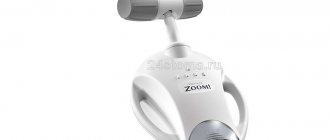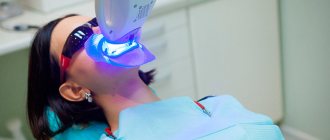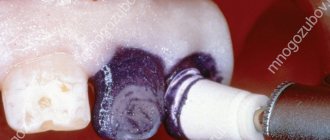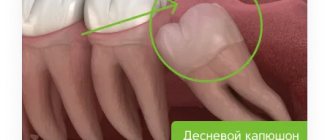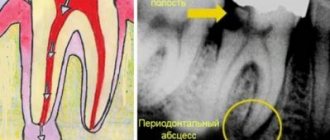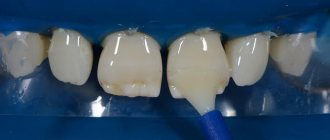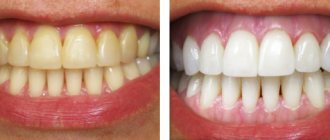A snow-white smile is the dream of many. Modern dentistry offers many methods of effective whitening - from special pastes to laser technologies. One of the most popular ways to whiten your smile is home teeth whitening with trays. This is what we will talk about.
What are whitening trays? Types and features
They are products made of soft transparent material - medical silicone and imitate the upper and lower dentition, while looking like covers. A special gel plays the role of a bleach - it is squeezed into the mouthguard. It contains active substances (agents). Also, the composition often includes fluorine and potassium nitrate, which reduce the sensitivity of the top layer (dentin).
There are 3 types of teeth whitening trays:
Standard
The set consists of 10-14 pairs (for the upper and lower jaws) of two-layer onlays of a standard shape, filled with gel.
Pros: the most inexpensive option, the gel does not get on the mucous membrane.
Cons: sometimes they do not adhere tightly to the surface of the teeth, which reduces the effect and can cause a feeling of discomfort.
Thermoplastic
Made of heat-resistant plastic. Before use, they are immersed in boiling water, where the products soften. Then the gel is squeezed into them (with a syringe) and immediately put on the teeth, properly pressing them to the surface.
Pros: tight fit and, as a result, better results. More comfortable to wear than standard ones (in most cases there are no unpleasant sensations).
Cons: they cost 1-5 2 times more.
Individual
They are made in dental centers from an impression of a specific person’s teeth.
Pros: 100% adherence to the enamel, optimal whitening, no discomfort, gel leakage is excluded.
Cons: cost, you need to visit the dentist.
Depending on the type of gel, the content of bleaching substances in it can be minimal (about 4%) or reach 45% or higher. The greater the concentration, the less mouth guards need to be worn. On average, the duration of use is from 2 to 10 hours daily.
Whitening trays
What are whitening trays? Types and features
They are products made of soft transparent material - medical silicone and imitate the upper and lower dentition, while looking like covers.
A special gel plays the role of a bleach - it is squeezed into the mouthguard. It contains active substances (agents). Also, the composition often includes fluorine and potassium nitrate, which reduce the sensitivity of the top layer (dentin). There are 3 types of teeth whitening trays:
Standard
The set consists of 10-14 pairs (for the upper and lower jaws) of two-layer onlays of a standard shape, filled with gel.
Pros: the most inexpensive option, the gel does not get on the mucous membrane.
Cons: sometimes they do not adhere tightly to the surface of the teeth, which reduces the effect and can cause a feeling of discomfort.
Thermoplastic
Made of heat-resistant plastic. Before use, they are immersed in boiling water, where the products soften. Then the gel is squeezed into them (with a syringe) and immediately put on the teeth, properly pressing them to the surface.
Pros: tight fit and, as a result, better results. More comfortable to wear than standard ones (in most cases there are no unpleasant sensations).
Cons: they cost 1-5 2 times more.
Individual
They are made in dental centers from an impression of a specific person’s teeth.
Pros: 100% adherence to the enamel, optimal whitening, no discomfort, gel leakage is excluded.
Cons: cost, you need to visit the dentist.
Depending on the type of gel, the content of bleaching substances in it can be minimal (about 4%) or reach 45% or higher. The greater the concentration, the less mouth guards need to be worn. On average, the duration of use is from 2 to 10 hours daily.
Who can benefit from teeth whitening with gel trays? Important nuances
Most often, this method is used by people whose teeth have turned yellow due to negative external influences:
- Smoking (nicotine changes the color of teeth).
- Drinking large doses of coffee or tea (same thing).
- Taking drugs of the tetracycline group (the enamel turns yellow or even acquires an orange tint).
- Age-related changes (in older people).
To achieve good results, it is necessary to take into account that the whitening effect will not last long (or will be weak) if negative factors are not excluded during the use of the tray and at the end of the course. Of course, age-related changes do not apply to this, but smoking or consuming too much coffee or tea is undesirable.
Note! Fillings and dental implants DO NOT WHITEN. Therefore, if the filled areas are in a “prominent place”, or the front real teeth alternate with artificial ones, it is better not to use mouthguards (there will be a contrast in shades).
Pros and cons of the procedure
High-quality teeth whitening trays are very convenient to use, in addition:
- This method is cheaper than professional whitening in a dental clinic.
- You don't have to visit the dentist regularly.
- You yourself determine the optimal schedule of procedures.
- The products are transparent and practically invisible to outsiders.
- You are guaranteed a decent effect.
The disadvantages include the duration of the course (from 1 to 3 months of daily wear), as well as high requirements for careful use of the gel - it must not get on the mucous membrane. In addition, wearing “covers” makes it difficult to pronounce – speech becomes slightly slurred. Sometimes it is possible to increase tooth sensitivity.
How to properly whiten teeth with gel trays?
There is nothing complicated in the procedure:
- Clean your teeth and remove moisture from the enamel with a napkin.
- The gel is injected into the mouth guards using a special syringe - the amount is indicated in the instructions.
- Place the product on the jaw and press it tightly to the surface of the teeth.
- If necessary, excess gel that gets on the gums is IMMEDIATELY removed with a napkin or cotton swab.
- Wait for the specified time.
- At the end of the procedure, remove the products and rinse your mouth thoroughly with water.
Then the mouthguards are washed under running water, allowed to dry and hidden in a special case.
Contraindications
There are not very many of them, but they are all important. If you find one or more contraindications, wearing mouth guards is not recommended. Or you should first consult with a good dentist.
So, teeth whitening with gel trays is contraindicated for people with:
- allergies to product material or gel components;
- diseases of the teeth and oral cavity (everything must be cured first);
- increased sensitivity of teeth;
- piercings on the tongue or lips;
- addiction to nicotine, coffee or tea (there will simply be no result);
- diabetes mellitus;
- rheumatism.
Pregnant and lactating women, as well as children under 18 years of age should not use this type of bleaching. If you take strong sedatives and can sleep through the time of removing the mouth guard, you should not do the procedure. Also, the method is not suitable for people who have recently had a tooth removed (you need to wait a month).
Who can benefit from teeth whitening with gel trays? Important nuances
Most often, this method is used by people whose teeth have turned yellow due to negative external influences:
- Smoking (nicotine changes the color of teeth).
- Drinking large doses of coffee or tea (same thing).
- Taking drugs of the tetracycline group (the enamel turns yellow or even acquires an orange tint).
- Age-related changes (in older people).
To achieve good results, it is necessary to take into account that the whitening effect will not last long (or will be weak) if negative factors are not excluded during the use of the tray and at the end of the course. Of course, age-related changes do not apply to this, but smoking or consuming too much coffee or tea is undesirable.
Note! Fillings and dental implants DO NOT WHITEN. Therefore, if the filled areas are in a “prominent place”, or the front real teeth alternate with artificial ones, it is better not to use mouthguards (there will be a contrast in shades).
Pros and cons of using whitening trays
Teeth whitening trays are so popular today primarily due to their advantages:
- simplicity and ease of use: you can whiten your teeth yourself at home, on vacation, even at work;
- effect: the enamel brightens by 4–6 tones, which is equivalent to the results of whitening in dentistry;
- aesthetic appearance: trays made of colorless silicone are invisible on the teeth, so if strangers see you during whitening, they may not notice anything;
- result-oriented: the dentist selects mouth guards and gel composition for a specific patient.
However, like other whitening methods, there are limitations to the use of trays. Individual intolerance is the main one. Medical silicone does not cause irritation to the mucous membranes, but more often allergies occur to the components of the whitening gel.
Other contraindications:
- age up to 16 years;
- pregnancy and lactation;
- thinned, hypersensitive enamel;
- lip and tongue piercing;
- pathological changes in the hard and soft tissues of teeth - that is, any type of caries, etc.;
- recent oral surgery, such as tooth extraction.
Important! If you have fillings, inlays, or crowns in your mouth, whitening will not work on them.
These items will retain their original color. Therefore, if you have filled areas or dentures in your smile area, you cannot whiten your teeth.
Pros and cons of the procedure
High-quality teeth whitening trays are very convenient to use, in addition:
- This method is cheaper than professional whitening in a dental clinic.
- You don't have to visit the dentist regularly.
- You yourself determine the optimal schedule of procedures.
- The products are transparent and practically invisible to outsiders.
- You are guaranteed a decent effect.
The disadvantages include the duration of the course (from 1 to 3 months of daily wear), as well as high requirements for careful use of the gel - it must not get on the mucous membrane. In addition, wearing “covers” makes it difficult to pronounce – speech becomes slightly slurred. Sometimes it is possible to increase tooth sensitivity.
Contraindications
There are not very many of them, but they are all important. If you find one or more contraindications, wearing mouth guards is not recommended. Or you should first consult with a good dentist.
So, teeth whitening with gel trays is contraindicated for people with:
- allergies to product material or gel components;
- diseases of the teeth and oral cavity (everything must be cured first);
- increased sensitivity of teeth;
- piercings on the tongue or lips;
- addiction to nicotine, coffee or tea (there will simply be no result);
- diabetes mellitus;
- rheumatism.
Pregnant and lactating women, as well as children under 18 years of age should not use this type of bleaching. If you take strong sedatives and can sleep through the time of removing the mouth guard, you should not do the procedure. Also, the method is not suitable for people who have recently had a tooth removed (you need to wait a month).
How to properly whiten teeth with gel trays?
There is nothing complicated in the procedure:
- Clean your teeth and remove moisture from the enamel with a napkin.
- The gel is injected into the mouth guards using a special syringe - the amount is indicated in the instructions.
- Place the product on the jaw and press it tightly to the surface of the teeth.
- If necessary, excess gel that gets on the gums is IMMEDIATELY removed with a napkin or cotton swab.
- Wait for the specified time.
- At the end of the procedure, remove the products and rinse your mouth thoroughly with water.
Then the mouthguards are washed under running water, allowed to dry and hidden in a special case.
Main types of dental guards:
- A standard type mouthguard is a mass-produced product that has standard parameters suitable for most people. Can be used immediately after purchase, without individual adjustment to the dentition.
- Thermoplastic mouth guard is made from a special material that tends to soften when exposed to water. When first put on, they take the shape of the dentition, thereby ensuring an exact fit to the enamel surface.
- A custom-designed mouthguard is an elite option, which is produced in special dental centers, corresponding to impressions of the patient’s teeth. Allows you to produce trays that most accurately fit the entire surface of the teeth being whitened.
Standard thermoplastic type mouthguards are used most often because they do not require large amounts of time and money, unlike custom development.
In what cases will they not help?
Mouthguards may not be suitable for everyone due to the individual characteristics of the body. It should be borne in mind that if teeth and gums are characterized by high sensitivity and intolerance to certain substances, then whitening gels in contact with tissues can lead to irritation of the mucous membrane. This is accompanied by discomfort during the procedure.
When purchasing a whitening gel, dentists recommend paying attention to the chemical composition and concentration of active substances. Thus, the selected products may contain hydrogen peroxide in excess quantities. This can damage the structure of the teeth. Therefore, the dentists of our clinic recommend contacting a specialist who will whiten your teeth without harming the oral cavity.
Features of care
Whitening trays are easy to care for. After use, the mouthguard should be rinsed thoroughly, and if necessary, the outer side of the elements should be cleaned with a regular toothbrush without toothpaste. To store the mouth guard, you will need a special case with a small hole for ventilation, which will protect it from damage and contamination.
Price
The price depends on the type of mouth guard and the materials from which it is made. The most inexpensive are ready-made structures. When making individual products, you need to take into account the cost of additional services.
Our clinic uses DayWhite and NiteWhite home whitening systems. The kit includes individual mouth guards made from impressions and two gels with hydrogen peroxide and carbamide for night and day use. All labor and supplies are included in the price. The manufacturer of the Discus Dental system, which is a subsidiary of the developer of the unique Zoom whitening technology.
Current prices can be viewed on the website or inquired by phone.
